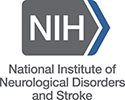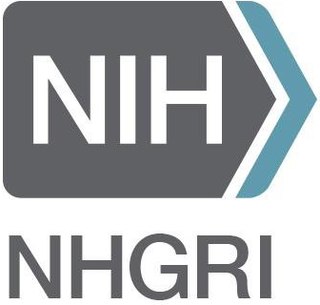
The National Institute of Neurological Disorders and Stroke (NINDS) is a part of the U.S. National Institutes of Health (NIH). It conducts and funds research on brain and nervous system disorders and has a budget of just over US$2.03 billion. The mission of NINDS is "to reduce the burden of neurological disease—a burden borne by every age group, every segment of society, and people all over the world". NINDS has established two major branches for research: an extramural branch that funds studies outside the NIH, and an intramural branch that funds research inside the NIH. Most of NINDS' budget goes to fund extramural research. NINDS' basic science research focuses on studies of the fundamental biology of the brain and nervous system, genetics, neurodegeneration, learning and memory, motor control, brain repair, and synapses. NINDS also funds clinical research related to diseases and disorders of the brain and nervous system, e.g. AIDS, Alzheimer's disease, epilepsy, muscular dystrophy, multiple sclerosis, Parkinson's disease, spinal cord injury, stroke, and traumatic brain injury.
The National Institute of Arthritis and Musculoskeletal and Skin Diseases (NIAMS) is one of the institutes and centers that make up the National Institutes of Health, an agency of the United States Department of Health and Human Services (HHS).

Gaucher's disease or Gaucher disease (GD) is a genetic disorder in which glucocerebroside accumulates in cells and certain organs. The disorder is characterized by bruising, fatigue, anemia, low blood platelet count and enlargement of the liver and spleen, and is caused by a hereditary deficiency of the enzyme glucocerebrosidase, which acts on glucocerebroside. When the enzyme is defective, glucocerebroside accumulates, particularly in white blood cells and especially in macrophages. Glucocerebroside can collect in the spleen, liver, kidneys, lungs, brain, and bone marrow.

The National Human Genome Research Institute (NHGRI) is an institute of the National Institutes of Health, located in Bethesda, Maryland.

β-Glucocerebrosidase is an enzyme with glucosylceramidase activity that cleaves by hydrolysis the β-glycosidic linkage of the chemical glucocerebroside, an intermediate in glycolipid metabolism that is abundant in cell membranes. It is localized in the lysosome, where it remains associated with the lysosomal membrane. β-Glucocerebrosidase is 497 amino acids in length and has a molecular mass of 59,700 Da.

Medical genetics is the branch of medicine that involves the diagnosis and management of hereditary disorders. Medical genetics differs from human genetics in that human genetics is a field of scientific research that may or may not apply to medicine, while medical genetics refers to the application of genetics to medical care. For example, research on the causes and inheritance of genetic disorders would be considered within both human genetics and medical genetics, while the diagnosis, management, and counselling people with genetic disorders would be considered part of medical genetics.
Harry Ostrer is a medical geneticist who investigates the genetic basis of common and rare disorders. In the diagnostic laboratory, he translates the findings of genetic discoveries into tests that can be used to identify people's risks for disease prior to occurrence, or for predicting its outcome once it has occurred. He is also known for his study, writing and lectures on the origins of the Jewish people.

Neurogenetics studies the role of genetics in the development and function of the nervous system. It considers neural characteristics as phenotypes, and is mainly based on the observation that the nervous systems of individuals, even of those belonging to the same species, may not be identical. As the name implies, it draws aspects from both the studies of neuroscience and genetics, focusing in particular how the genetic code an organism carries affects its expressed traits. Mutations in this genetic sequence can have a wide range of effects on the quality of life of the individual. Neurological diseases, behavior and personality are all studied in the context of neurogenetics. The field of neurogenetics emerged in the mid to late 20th century with advances closely following advancements made in available technology. Currently, neurogenetics is the center of much research utilizing cutting edge techniques.
Mitochondrially encoded tRNA threonine also known as MT-TT is a transfer RNA which in humans is encoded by the mitochondrial MT-TT gene.

Andrew B. Singleton is a British neurogeneticist currently working in the USA. He was born in Guernsey, the Channel Islands in 1972, where he lived until he was 18 years old. His secondary education was conducted at the Guernsey Grammar School. He earned a first class degree in Applied Physiology from Sunderland University and his PhD in neuroscience from the University of Newcastle upon Tyne where he studied the genetics of Alzheimer's disease and other dementias at the Medical Research Council (MRC) Neurochemical Pathology Unit. He moved to the United States in 1999, where he began working at the Mayo Clinic in Jacksonville, Florida studying the genetic basis of Parkinson's disease, ataxia, and dystonia. He moved to the National Institutes of Health in 2001 to head the newly formed Molecular Genetics unit within the Laboratory of Neurogenetics. In 2006 he took over as Chief of the Laboratory of Neurogenetics and became an NIH Distinguished Investigator in the intramural program at the National Institute on Aging (NIA) in 2017. In 2020 he stepped down as the Chief of the Laboratory of Neurogenetics and became the Acting Director of the newly formed Center for Alzheimer's and Related Dementias at the NIA. In 2021 he became the Director of CARD.
Sepiapterin reductase deficiency is an inherited pediatric disorder characterized by movement problems, and most commonly displayed as a pattern of involuntary sustained muscle contractions known as dystonia. Symptoms are usually present within the first year of age, but diagnosis is delayed due to physicians lack of awareness and the specialized diagnostic procedures. Individuals with this disorder also have delayed motor skills development including sitting, crawling, and need assistance when walking. Additional symptoms of this disorder include intellectual disability, excessive sleeping, mood swings, and an abnormally small head size. SR deficiency is a very rare condition. The first case was diagnosed in 2001, and since then there have been approximately 30 reported cases. At this time, the condition seems to be treatable, but the lack of overall awareness and the need for a series of atypical procedures used to diagnose this condition pose a dilemma.
Maria Iandolo New is a professor of Pediatrics, Genomics and Genetics at Icahn School of Medicine at Mount Sinai in New York City. She is an expert in congenital adrenal hyperplasia (CAH), a genetic condition affecting the adrenal gland that can affect sexual development.

Alice M. Lazzarini is a scientist, author and researcher on neurogenetic disorders, including Huntington's disease and Parkinson's disease. She is an assistant professor of Neurology at Rutgers Robert Wood Johnson Medical School, where her work helped establish the genetic basis of Parkinson's. Later in life, she was diagnosed with Parkinson's—the very disease she had spent decades researching.
Charis Eng is a Singapore-born physician-scientist and geneticist at the Cleveland Clinic, notable for identifying the PTEN gene. She is the Chairwoman and founding Director of the Genomic Medicine Institute of the Cleveland Clinic, founding Director and attending clinical cancer geneticist of the institute’s clinical component, the Center for Personalized Genetic Healthcare, and Professor and Vice Chairwoman of the Department of Genetics and Genome Sciences at Case Western Reserve University School of Medicine.

Patrik Brundin is a neuroscientist known for his research on Parkinson's disease (PD) and Huntington's disease. He is currently a Distinguished Scientist and serving as Therapeutic Area Leader for Movement Disorders at F. Hoffmann-La Roche, Pharmaceutical Research and Early Development (pRED).
Professor Patrick Francis Chinnery, FRCP, FRCPath, FMedSci, is a neurologist, clinician scientist, and Wellcome Trust Principal Research Fellow based in the Medical Research Council Mitochondrial Biology Unit and the University of Cambridge, where he is also Professor of Neurology and Head of the Department of Clinical Neurosciences.
Dimitri Krainc is the Aaron Montgomery Ward Professor and Chairman of the Ken & Ruth Davee Department of Neurology and Director of the Simpson Querrey Center for Neurogenetics at Northwestern University Feinberg School of Medicine. He completed his research and clinical training at the Massachusetts General Hospital and Harvard Medical School, where he served on faculty until relocating to Northwestern in 2013. He was awarded the Javits Neuroscience Investigator Award and outstanding investigator award from NIH, and is President-elect of the American Neurological Association. Krainc was elected to the Association of American Physicians and the National Academy of Medicine for what NAM described as “groundbreaking discoveries in the area of neurodegenerative disorders." He is the principal founding scientist of biotech companies Lysosomal Therapeutics and Vanqua Bio and serves as Venture Partner at OrbiMed.
Ludmila Prokunina-Olsson is a molecular medical geneticist who conducts genetic and functional analyses downstream of genome-wide association studies (GWAS) for various human traits, including cancer, immune and infectious diseases. She is chief of the Laboratory of Translational Genomics (LTG) at the National Cancer Institute.
Christine Klein is a German physician who is a professor of neurology and neurogenetics at the University of Lübeck. Her research considers the molecular genetics of movement disorders. She is a Fellow of the European Academy of Neurology, former President of the German Neurological Society and incoming President of the European Section of the International Parkinson and Movement Disorder Society.










